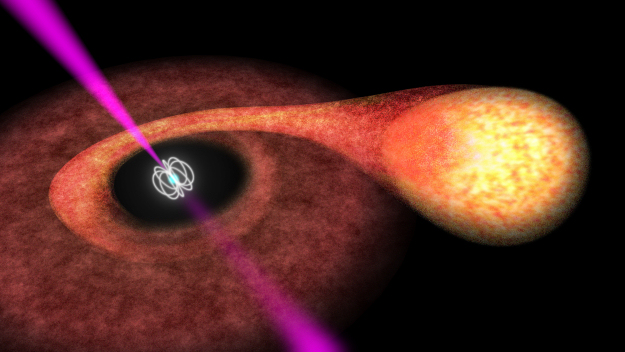The radio-bright phase of a pulsar accreting matter from a companion star

Date: 25 September 2013
Satellite: INTEGRAL and XMM-Newton
Depicts: Artist's impression of a radio-bright pulsar in a binary system
Copyright: ESA
This illustration shows an artist's impression of a radio-bright pulsar in a binary system with a low-mass star as a companion.
When the gravitational pull of the pulsar – which is a very dense object – starts drawing matter from the companion star, the pulsar starts accreting matter via an accretion disc, and emitting X-rays. During the accretion process, the high density of accreted matter inhibits the acceleration of particles that cause radio emission, so the pulsar does not emit radio waves but only X-rays. When the accretion rate decreases, the magnetosphere expands and pushes matter away from the pulsar: as a consequence, the X-ray emission becomes weaker and weaker, while the radio emission intensifies. The two narrow beams of radio emission are shown in purple.
Astronomers believe that accretion in a binary system is the mechanism responsible for speeding up millisecond pulsars, which are known to spin much faster than expected for their old age.
